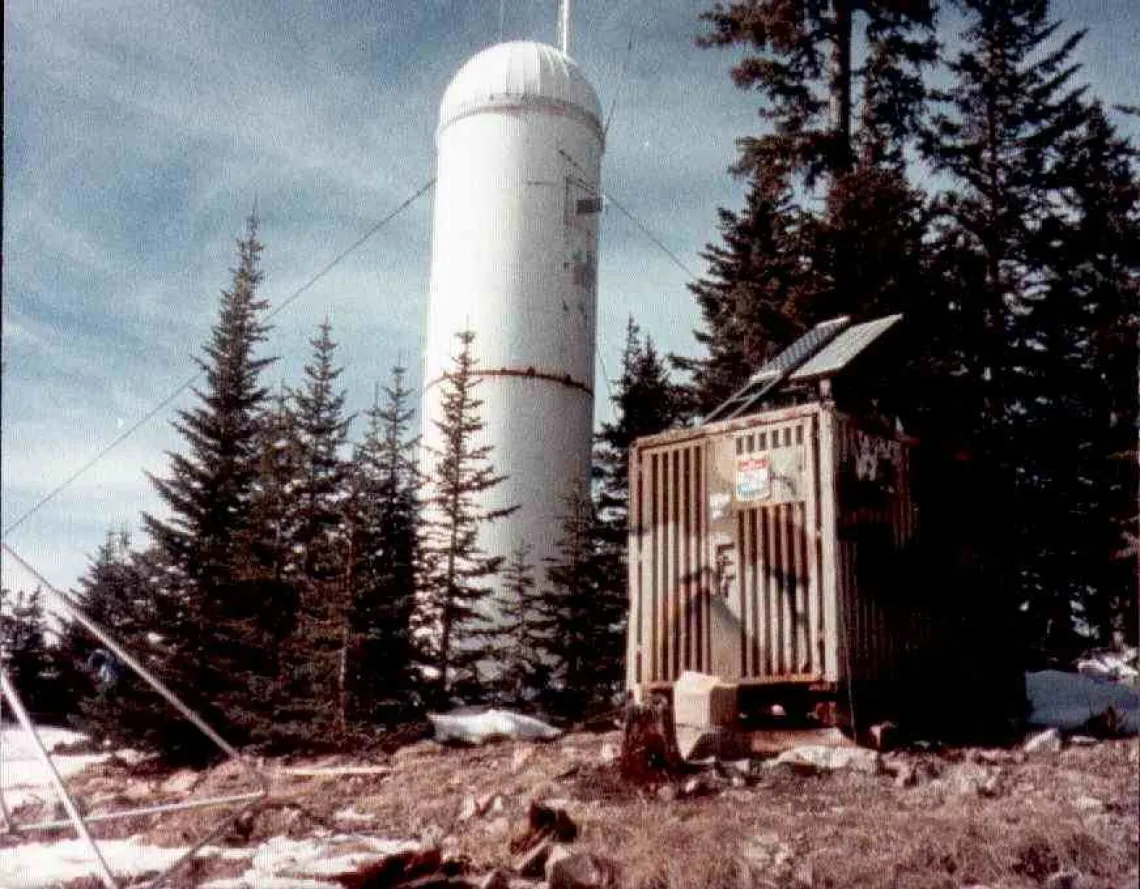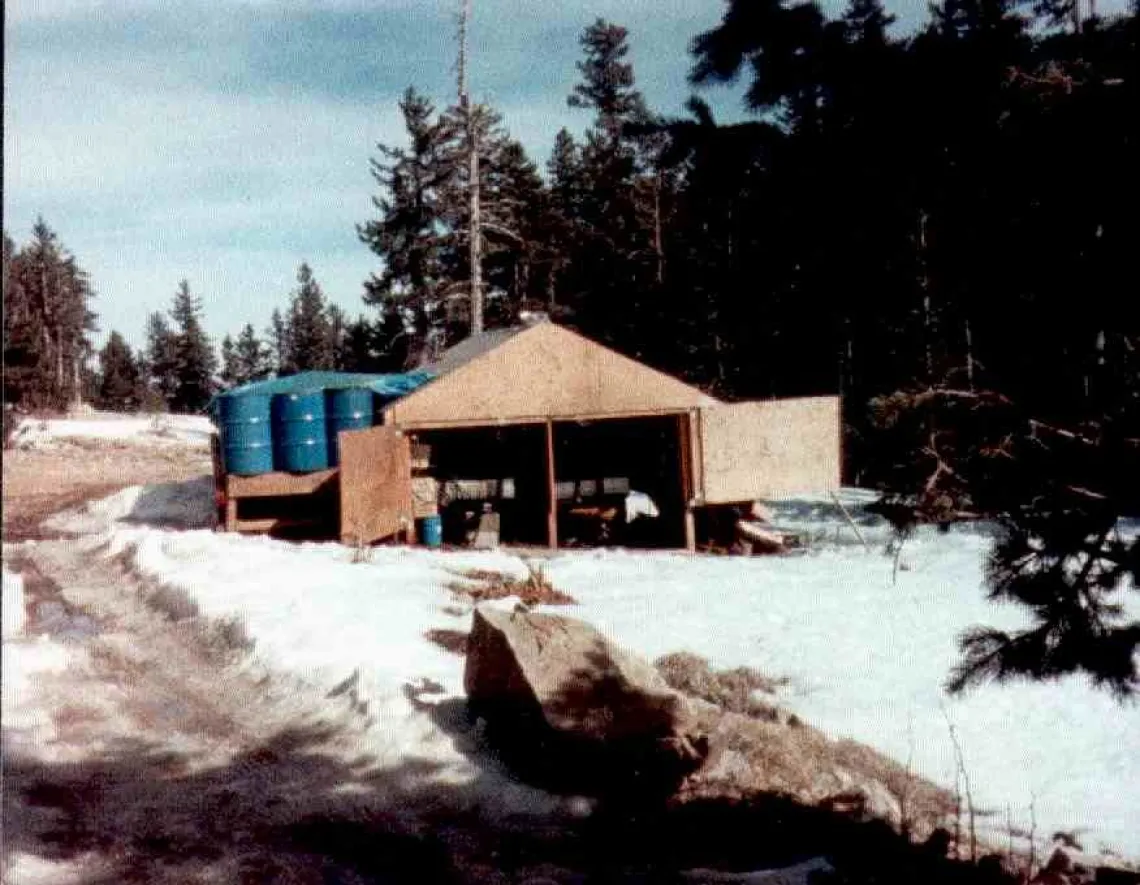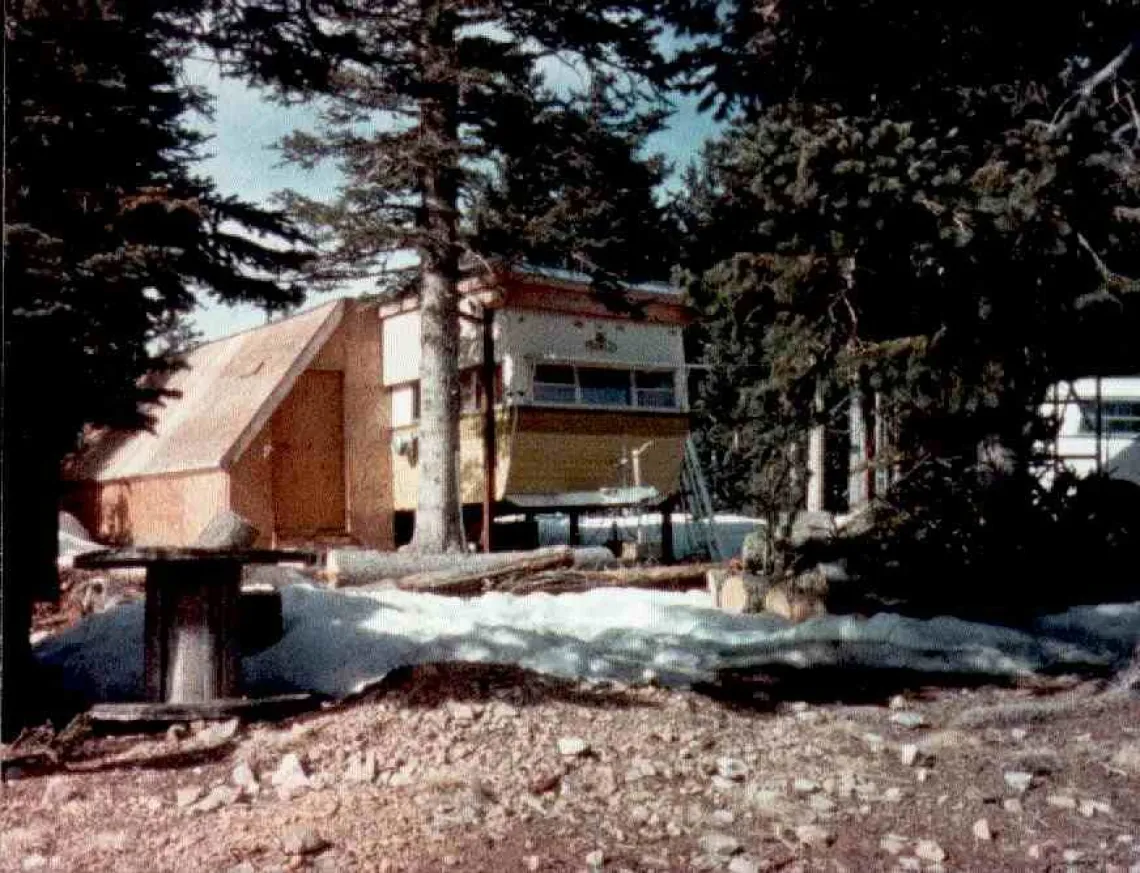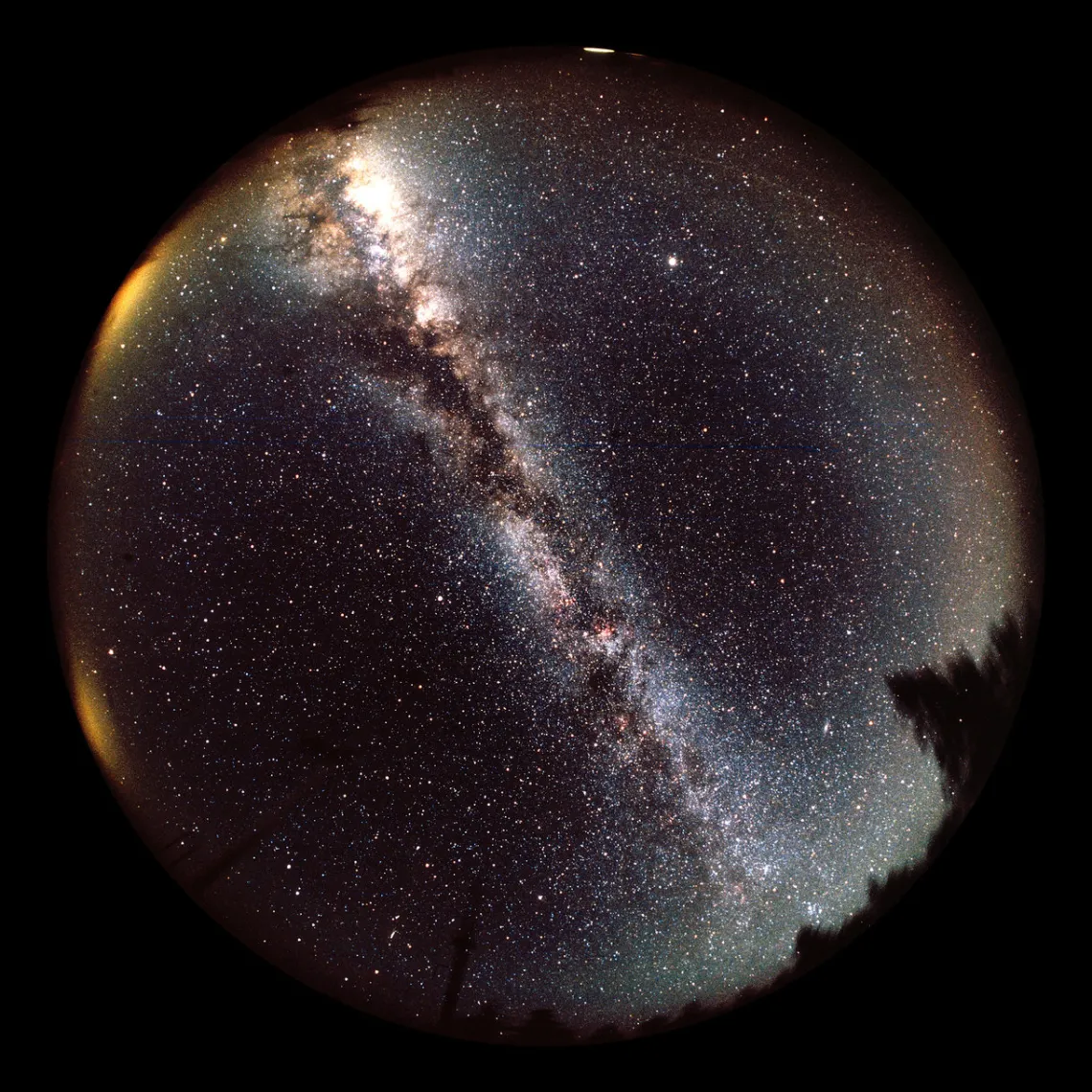
Site Testing -- The Early Days
Mount Graham was selected from a survey of 280 potential mountain sites on the basis of astronomical considerations such as clear skies, low light pollution, low atmospheric water vapor, and ease of access and support. Mount Graham is in the Sonoran desert climatic zone along with established sites such as Kitt Peak, Mount Hopkins and Mount Lemmon; its intrinsic climatic properties are those which have made the desert southwest so productive for astronomy for almost a century. Mount Graham does, however, have the additional advantages of greater altitude and very low light pollution. Unlike rival sites outside the continental United States, it has excellent logistics: sufficient area for several telescopes, a pre-existing paved highway, good connections by air and road, and a high level of local technical support.
The only astronomical site characteristic not considered in the initial survey was image sharpness (astronomical seeing) since there is no generally accepted method of doing this other than by making in situ measurements. The image sharpness on Mt. Graham has, therefore, been the subject of a ten year study carried out by Dr. Richard Cromwell, Dr. Nick Woolf, and others. These studies first identified the Emerald Peak region as the best general area on Mount Graham for an observatory, because it provides good image sharpness and space for telescopes. In the second study phase, measurements were made of seeing differences between various locations within the 150-acre Mt. Graham scientific research area.

All of the telescope sites which Steward Observatory has tested extensively within the 150-acre Mt. Graham Astrophysical Research Area, around Emerald Peak, provide excellent astronomical seeing. Several years of data show that the typical image size for a large telescope located 25 meters above the ground is about 0.6 arc-seconds; this compares favorably with the image quality at the Multiple Mirror Telescope on Mount Hopkins in Southern Arizona. The table below shows that the Emerald Peak sites are also competitive on a worldwide basis (other data provided by the observatories concerned).
Image Sharpness:
| Site | Median Seeing (arcseconds) |
|---|---|
| Mauna Kea Observatory | 0.45 |
| Emerald Peak sites (range) | 0.55-0.63 |
| Multiple Mirror Telescope (Mt. Hopkins/summit) | 0.60 |
| European Southern Observatory (VLT site) | 0.66 |
| Magellan (Las Campanas) & ESO (La Silla) | 0.76 |
Studies have demonstrated that two atmospheric layers contribute most of the image blurring or seeing. A high level (10km) layer contributes about 0.5 - 0.53 arc seconds and a thin (20m) boundary layer at roughly tree height contributes most of the remainder and accounts for local seeing differences. By suitable design of the telescope, the effects of this boundary layer can be minimized. This has, of course, been accommodated in the LBT design.
Among the Emerald Peak sites, the site of the 1.8-m Vatican Advanced Technology Telescope (VATT), the smallest of the telescopes of the MGIO, yields the poorest image sharpness (median 0.63 arc-seconds at a height of 25 meters). A request to place the LBT, the largest telescope in the first phase of the MGIO, at the best of the potential sites for the telescope (peak 10298, median seeing 0.55 arc-seconds at 25 meters) was turned down by the U.S. Fish and Wildlife Service because they felt the Phase I telescopes should remain clustered. The next best site, Emerald Peak (10477), with a seeing of 0.59 arc-seconds median at 25 meters) was then requested. The request was approved in December 1993. While peak 10298 was preferred on the basis of image quality alone, the LBT will be fully competitive at Emerald Peak, which better satisfied other important criteria besides image quality.

The VATT is now operational at Emerald Peak and measures of image sharpness at that telescope are beginning to provide some "real life" calibration of the test data. The VATT which is placed ten meters above ground is now regularly achieving image sharpness around 0.75 arc-seconds even without thermal control of the mirror (still to be installed). After adjustment to 25 meters, the predicted image sharpness for LBT may be slightly better than shown in the table above 1.
The Mt. Graham site thus combines the familiar advantages of existing southwestern sites with very good image sharpness, low light pollution, an altitude high enough for infrared work and an existing paved access highway. It is essentially unique in its astronomical qualities at least in the continental United States.

The image of the Mt. Graham night sky was taken from High Peak (the 10,720-foot summit of Mt. Graham) in 1985 by Doug Officer and Paul Welch. A special camera built by Roger Angel and personnel from the Steward Observatory Mirror Lab combined a 16 mm Nikon fish-eye lens and a 120-format Hasselblad back. The 20 minute exposure at F/4 was with Sakura 400 negative film hypersensitized by Lumicon. The camera tracked the apparent rotation of the stars during the exposure, so the silhouettes of the trees and two radio antennas on the horizon are slightly blurred. The summer Milky Way dominates the picture under this dark sky. The yellow glows on the horizon to the West are the lights of Phoenix and Tucson. The original photo was scanned by Jacob Rigoli. Copyright 1997, Steward Observatory, The University of Arizona.

